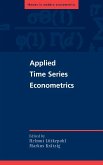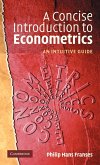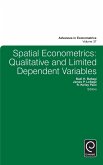Spatial Econometrics takes a broader view of spatial econometrics and introduces some of the basic concepts. After an introduction, Section 2 introduces methods for the spatial econometric analysis of regional data that have been the focus of most theoretical and empirical work in this literature. This section considers modelling strategies falling within the general structure of the SARAR paradigm and of its particularizations by presenting the various estimation and hypothesis testing procedures based on Maximum Likelihood (ML), Generalized Method of Moments (GMM) and Two Stage Least Squares (2SLS). Section 3 is devoted to the new emerging field of spatial econometric analysis of individual granular spatial data sometimes referred to as spatial microeconometrics. The author presents modelling strategies that use information about the actual position of each economic agent to explain both individuals' location decisions and the economic actions observed in the chosen locations. This section reviews the peculiarities of general spatial autoregressive model in this setting and the use of models where distances are used as predictors in a regression framework, as well as presenting some point pattern methods to model individuals' locational choices, and the phenomena of co-localization and joint-localization. Finally, Section 4 applies the general SARAR paradigm to the case of spatial interaction models estimated using data in the form of origin-destination variables and specified following models based on the analogy with the Newtonian law of universal gravitation. The discussion is intentionally limited to the analysis of spatial data observed in a single moment of time leaving out of the presentation the case of dynamic spatial data such as those observed in spatial panel data.
From the reviews: "Arbia's relatively short text contains six chapters devoted to spatial econometrics, and the author indicates it could be used 'as a textbook for post-graduate introductory course of around 20/30 hours, or as a reference book for post-graduate students engaged in Ph.D. work on quantitative economics (or other social sciences), involving spatial econometric estimation problems' ... ." (James P. LeSage, Journal of Regional Science, Vol. 47 (3), 2007)








